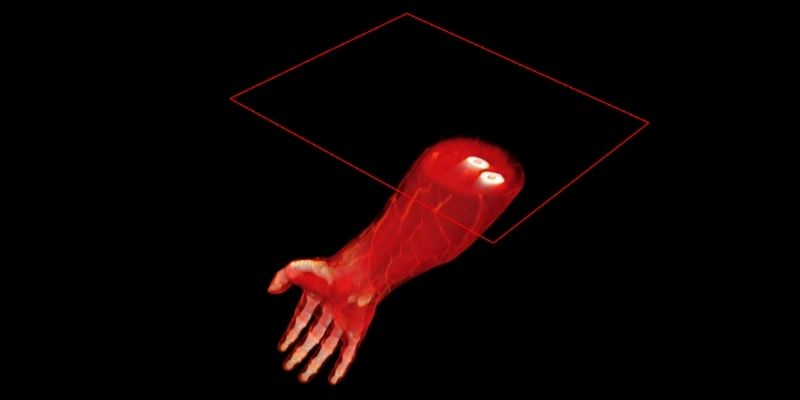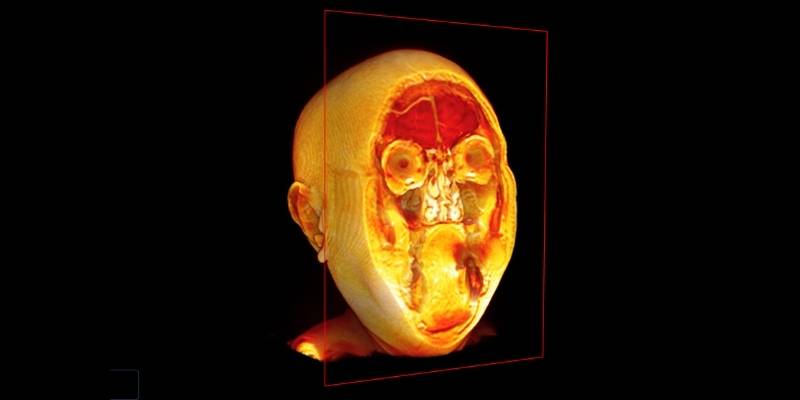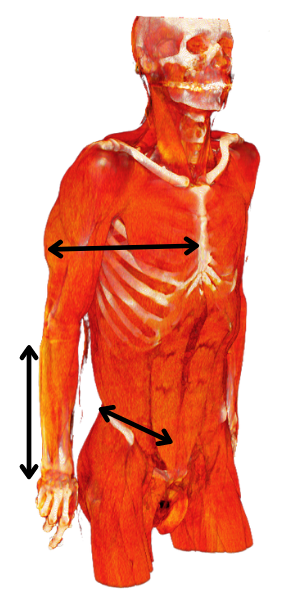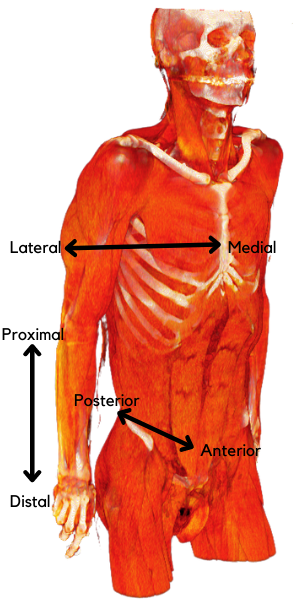The Planes of the Body & Anatomical Directions | Anatomy Dissection
by Robert Tallitsch, PhD | March 31, 2022
.jpg)
Short video explaining anatomical position, anatomical directions, and the planes of the body!
Written by: Robert Tallitsch, PhD
Here are two anatomical questions for you to consider:
- Is there a “standard reference” regarding how one visualizes a cadaver or a living person when you refer to an anatomical landmark on the body?
- Does the appearance of an anatomical structure vary depending upon how that anatomical structure is sectioned (cut)?
The answer to both of those questions is “yes”.
- The standard reference regarding how one visualizes a cadaver is the anatomical position.
- The appearance of an anatomical structure varies based on the plane of section of that structure.
Anatomical Position
Without a specific frame of reference when referring to the human body it would be difficult for anatomists to identify or refer to the location of a specific structure. What would be the right upper limb? Your right as you look at it or the right side on the body you are observing?
Think about how you tell someone to get to a specific location — like your house. You need to refer to specific landmarks (street names, or a brightly painted house on the corner for instance) and directions (north, south, etc.) If you were unable to refer to landmarks such as these, how would you give directions to your house? The same thing applies in anatomy.
In anatomy the standard reference for visualizing a cadaver or a living person is termed the anatomical position. The anatomical position is a human body standing upright, feet flat on the floor, toes forward, eyes forward, and arms against the sides with the palms rotated forward. Unless otherwise noted, all references to the human body start from this reference position — the anatomical position.
Anatomical Directions
Once the frame of reference is determined, one can then use anatomical directional terms, just as polar directional terms of a map (north, south, east, west) are used once the frame of reference has been determined on a map. (What direction on the map is north?)
Directional terms typically come in opposite pairs. In addition, some directional terms may be used interchangeably. Listed below are some examples of anatomical directional terms and their definitions.
Proximal - Closer to the point of attachment
Distal - Further from the point of attachment
Medial - Closer to the midline of the body
Lateral - Further from the midline of the body
Anterior (or ventral) - The front of the body
Posterior (or dorsal) - The back of the body
Superficial - Closer to the surface
Deep - Further from the surface
Note that, in the examples given above, some terms are equivalent, such as anterior and ventral, or posterior and dorsal. When such equivalent terms are used it is important to remember that anatomists do not mix terms of opposing pairs. For instance, if one refers to the anterior surface of a structure it would be incorrect to then refer to the dorsal surface of the same structure. To be anatomically correct one would need to refer to the posterior surface of that structure.
Planes of Section
As was mentioned at the start of this Brain Builder, the appearance of an anatomical structure varies based on how that structure is sectioned (cut). In order to understand how a three-dimensional structure has been sectioned one needs to reference one of the three sectional planes.
- The frontal plane of section (also termed the coronal plane) is a plane that parallels the longitudinal axis of the body, traveling through the body from side to side, separating it into anterior and posterior sections.
- The transverse plane of section (also termed a cross-sectional plane) is a plane that runs perpendicular to the longitudinal axis of the part of the body being studied.
- The sagittal plane (also termed parasagittal plane) also parallels the longitudinal axis of the body, but travels from the anterior surface to the posterior surface. This plane separates the part being studied into right and left sections. If the plane divides the body into equal right and left halves then the plane is referred to as a mid-sagittal plane.
Anatomical position, anatomical directions, and the planes of the body are important to understanding and communicating efficiently within a lab and the medical field. BodyViz 3D Anatomy Software uses adjustable planes to virtually dissect and slice through real patient anatomy.
Schedule a demo today to learn how you can incorporate BodyViz into your classes and give your students the opportunity to practice using the information from this Brain Builder on real patients!
Schedule a Demo
Key Terms:
Anatomical position - The standard position of the human body in anatomy. This position is an upright body, standing flat on its feet, eyes forward, toes forward, arms at the side and palms facing forward.
Proximal - Closer to the point of attachment
Distal - Further from the point of attachment
Medial - Closer to the midline of the body
Lateral - Further from the midline of the body
Anterior (or ventral) - The front of the body
Posterior (or dorsal) - The back of the body
Superficial - Closer to the surface of the body
Deep - Further from the surface
Frontal plane - A plane that parallels the longitudinal axis of the body, traveling through the body from side to side, separating it into anterior and posterior sections.
Transverse plane - A plane that runs perpendicular to the longitudinal axis of the part of the body being studied.
Sagittal plane - A plane that parallels the longitudinal axis of the body, traveling from the anterior surface to the posterior surface, separating the part being studied into right and left sections.
Midsagittal plane - When a sagittal plane divides the body into equal right and left halves.
Questions:
- What is the relationship of the wrist to the elbow of the upper limb?
A: The wrist is distal to the elbow.
- What is the relationship of the elbow to the shoulder?
A: The elbow is distal to the shoulder.
- What is the relationship of the shoulder to the elbow?
A: The shoulder is proximal to the elbow.
- Below is an illustration of the arm that has been sectioned (cut). What was the plane of section used in this instance?

A: Transverse plane (also termed cross sectional plane)
- What is the definition of the term deep?
A: Further from the surface of the body
- Stand in the anatomical position. Now raise your right upper limb such that it is straight up in the air and touching your right ear. Remain in this position. While you are in this position, is the portion of your right upper limb that is touching your ear the medial or lateral surface of the right upper limb?
A: Lateral surface. Remember – the anatomical position is always your point of reference, regardless of how the body (or a part of the body) is positioned. Therefore, the portion of your right upper limb that is touching your right ear is the lateral surface when you are in the anatomical position so it always stays the lateral surface, regardless of how the limb is positioned.
- As you view the image below, what plane of section was utilized in order to obtain such a section?

A: Frontal section
- Fill in the correct anatomical directional terms for the ends of each of the arrows in the images below.

A:

FREE Ready-to-Use Worksheet!
Download our BodyViz Brain Builder Activity with button below! This activity supports this article and video with instructions, links to the Brain Builder Video, key vocabulary terms with definitions, 10 questions, and the answer key.
Download Brain Builder Activity
Want to see more 3D anatomy resources with interactive anatomy content, virtual dissections of real patients, automatic grading and LMS integration?
Schedule a demo to see our virtual anatomy software and talk with our team about how we can help you to improve your anatomy class and become your students favorite class!
Schedule a Demo
Helpful Links: